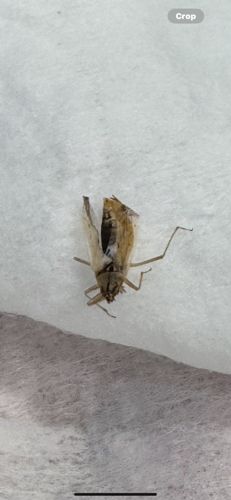Planthopper (likely a Delphacid Planthopper)
Scientific Name: Too difficult to determine exact genus and species from the provided image of a deceased specimen, but it belongs to the superfamily Fulgoroidea, most likely Family Delphacidae.
Order & Family: Order: Hemiptera, Family: Delphacidae (based on the presence of a large, movable spur at the apex of the hind tibia, though not clearly visible in this image, general morphology suggests this family)
Size: Typically small to medium-sized insects, ranging from 2 mm to 10 mm in length, depending on the species.

Natural Habitat
Widely distributed in various terrestrial habitats including grasslands, agricultural fields, wetlands, and forests, depending on the host plant availability. They are typically found on the stems and leaves of plants.
Diet & Feeding
Plant sap (phloem feeders), particularly from grasses, sedges, and other herbaceous plants. Some species are more specific in their host preferences.
Behavior Patterns
Planthoppers are known for their jumping ability, which is their primary escape mechanism. They typically feed on the phloem sap of plants. Many species are camouflaged to blend in with their host plants. Some species are migratory.
Risks & Benefits
Risks: Many species of planthoppers are significant agricultural pests, transmitting plant diseases (e.g., viruses, phytoplasmas) that can cause severe crop damage and yield loss. Examples include the Brown Planthopper on rice. Benefits: They serve as a food source for natural predators like spiders, ladybugs, and parasitic wasps, contributing to the food web balance. Some species may have a role in plant population control.
Identified on: 8/9/2025